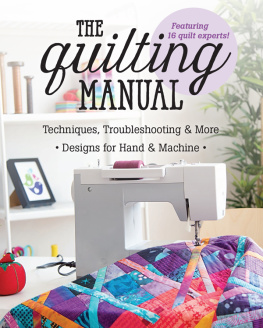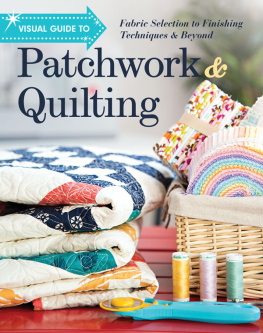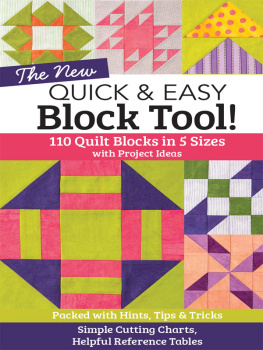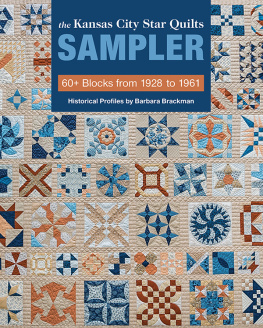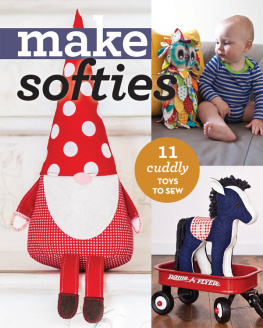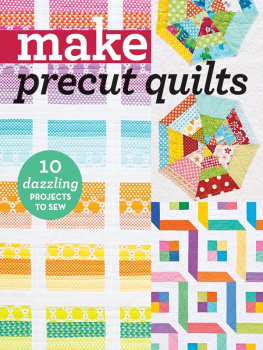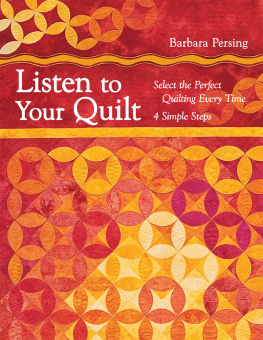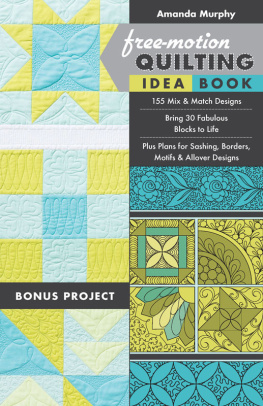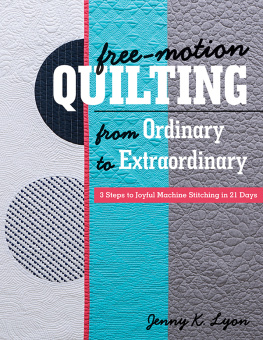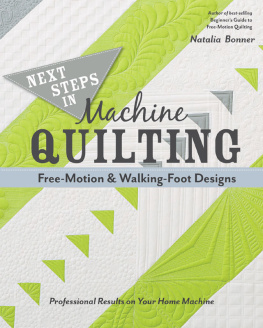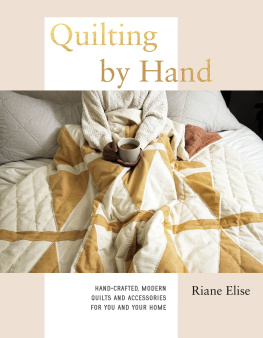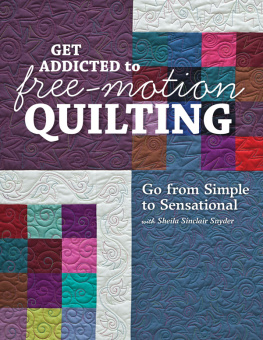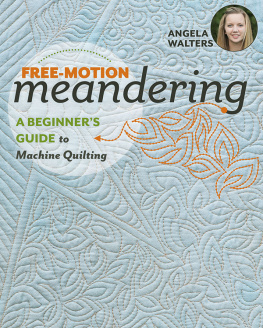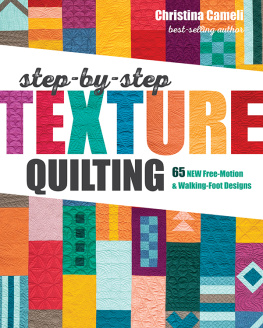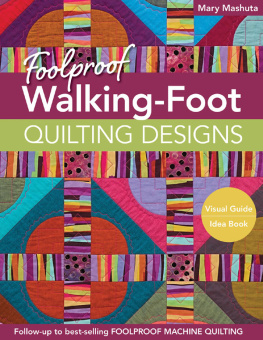C - The Quilting Manual: Techniques, Troubleshooting & More: Designs for Hand & Machine
Here you can read online C - The Quilting Manual: Techniques, Troubleshooting & More: Designs for Hand & Machine full text of the book (entire story) in english for free. Download pdf and epub, get meaning, cover and reviews about this ebook. year: 2017, publisher: C&T Publishing, genre: Children. Description of the work, (preface) as well as reviews are available. Best literature library LitArk.com created for fans of good reading and offers a wide selection of genres:
Romance novel
Science fiction
Adventure
Detective
Science
History
Home and family
Prose
Art
Politics
Computer
Non-fiction
Religion
Business
Children
Humor
Choose a favorite category and find really read worthwhile books. Enjoy immersion in the world of imagination, feel the emotions of the characters or learn something new for yourself, make an fascinating discovery.
- Book:The Quilting Manual: Techniques, Troubleshooting & More: Designs for Hand & Machine
- Author:
- Publisher:C&T Publishing
- Genre:
- Year:2017
- Rating:4 / 5
- Favourites:Add to favourites
- Your mark:
- 80
- 1
- 2
- 3
- 4
- 5
The Quilting Manual: Techniques, Troubleshooting & More: Designs for Hand & Machine: summary, description and annotation
We offer to read an annotation, description, summary or preface (depends on what the author of the book "The Quilting Manual: Techniques, Troubleshooting & More: Designs for Hand & Machine" wrote himself). If you haven't found the necessary information about the book — write in the comments, we will try to find it.
C: author's other books
Who wrote The Quilting Manual: Techniques, Troubleshooting & More: Designs for Hand & Machine? Find out the surname, the name of the author of the book and a list of all author's works by series.
The Quilting Manual: Techniques, Troubleshooting & More: Designs for Hand & Machine — read online for free the complete book (whole text) full work
Below is the text of the book, divided by pages. System saving the place of the last page read, allows you to conveniently read the book "The Quilting Manual: Techniques, Troubleshooting & More: Designs for Hand & Machine" online for free, without having to search again every time where you left off. Put a bookmark, and you can go to the page where you finished reading at any time.
Font size:
Interval:
Bookmark:
PUBLISHER: Amy Marson
CREATIVE DIRECTOR: Gailen Runge
PROJECT EDITOR: Alice Mace Nakanishi
COMPILER: Lindsay Conner
DEVELOPMENTAL EDITORS: Liz Aneloski, Cynthia Bix, Stacy Chamness, Lynn Koolish, S. Michele Fry, Deb Rowden, and Kesel Wilson
TECHNICAL EDITORS: Carolyn Aune, Stacy Chamness, Mary E. Flynn, Georgie Gerl, Ann Haley, Ellen Pahl, Sandy Peterson, Amanda Siegfried, Teresa Stroin, and Sadhana Wray
COVER/BOOK DESIGNER: April Mostek
PRODUCTION COORDINATOR: Zinnia Heinzmann
ILLUSTRATORS: Mary E. Flynn, Valyrie Friedman, Laura Lee Fritz, Geta Grama, Tim Manibusan, Cheryl Malkowski, Wendy Mathson, Kirstie L. Pettersen, Jessica Schick, Aliza Shalit, Richard Sheppard, and Hari Walner
PHOTOGRAPHY by Diane Pedersen, Christina Carty-Francis, Luke Mulks, and Sharon Risedorph, unless otherwise noted
COVER PHOTOGRAPHY by Lucy Glover
Published by Stash Books, an imprint of C&T Publishing, Inc., P.O. Box 1456, Lafayette, CA 94549
THE BASICS of MACHINE QUILTING
by Christine Maraccini
Throughout my quilting career I have quilted on both a domestic (tabletop) and a longarm machine. Id like to take a moment to debunk the myth that a longarm machine is a magical tool that produces amazing quilting. A longarm quilting machine does make machine quilting more convenient and efficient. However, it is not necessary to use a longarm machine to achieve beautiful quilting. Everything in this book can be done on either a domestic or a longarm machine. The quality of the quilting is dependent on you and your ability to freehand draw the designs that you choose to quilt, not on the technology of the machine that you are using.
tips for free-motion quilting on a domestic machine
Quilting Feet
For free-motion quilting you will need a free-motion or darning foot for your machine. My favorite ones have a clear ring or oval that presses against the fabric as you sew. These are great because they enable you to see where you are going. Usually the circle on the bottom of the foot has a relatively accurate measurement of 14 in radius, which can come in handy as a spacer when you are echo quilting. Each brand of sewing machine has specific feet that will fit on it. See your local sewing machine dealer to get the correct foot for your personal machine.
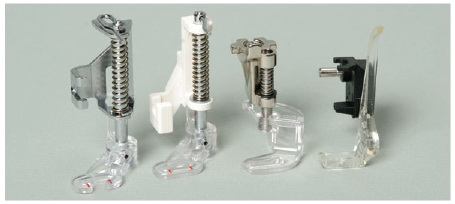
Each brand of machine has its own quilting feet. I prefer the type with a clear ring or oval.
Your Working Style and Your Work Space
One of the biggest complaints about machine quilting is the difficulty of maneuvering a large quilt under the short arm of a domestic sewing machine. My working style is to quilt in continuous paths whenever possible. This enables me to roll the quilt so that just the path I need is exposed. I can start at one end of the quilt and sew one design, non-stop, until I reach the other end of the quilt. I hate to start and stop, so I try to do it as little as possible. Remember, our goal is to get these quilts finished!
Your workstation can be either fancy or simple as long as it has a flat surface behind and to the left of your sewing machine large enough to hold the weight of your entire quilt as you sew. I quilt at my kitchen table with my sewing machine located at the front right corner of the table.
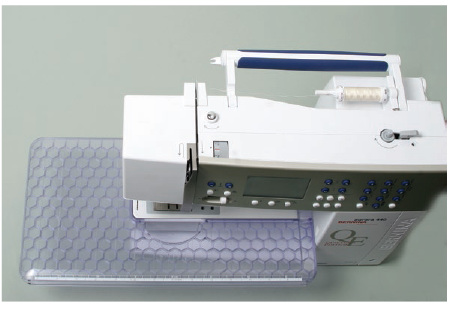
Your workstation can be simple or fancy. I prefer simple, so a large table and a machine with a nice extended base are perfect.
When I have an especially large quilt I add another table to the back of my kitchen table to increase the surface area. I also like to use an extended base on my sewing machine when Im quilting. This extra surface allows me to maintain better control over the area Im quilting.
TIP  If your quilt seems to be sticking to the extended base, wipe the base with a small amount of Pledge cleaner and the surface will become slicker. As you would after contact with any chemical, be sure to wash your quilt when completed to remove any residue.
If your quilt seems to be sticking to the extended base, wipe the base with a small amount of Pledge cleaner and the surface will become slicker. As you would after contact with any chemical, be sure to wash your quilt when completed to remove any residue.
tips for free-motion quilting on a longarm machine
The most commonly used longarm machines in the industry have the following things in common: a large throat, long canvas leaders to pin your quilt layers to, and a smooth carriage system to move the machine while you sew. I prefer to float my quilt tops on my longarm machine. This means that I pin the backing fabric onto the leaders. I then lay the layer of batting onto the backing near the top leader and then lay the quilt top onto the batting. I pin the quilt top through the batting and onto the backing. I allow the quilt top to drape over the front edge of the machine. This allows me to adjust the quilt top as I work. I can fix any spots that are uneven or have extra fullness as I move down the quilt.
The most important thing I can tell you about using a longarm is that it takes practice. These are not magic machines. The general rule is that it takes one full year to become comfortable and proficient on a longarm. You will get better each time you finish a quilt. Ask your local quilt guild if they have charity quilt tops that need to be quilted. This is a great opportunity to get in some extra practice. Also, take lessons from experienced teachers who are familiar with the brand of machine you use. Be sure to take a maintenance class for your machine as well. Take time to learn how your machine operates in the specific climate and conditions that it is in. Because a longarm has so many moving parts and tension dials, you need to practice and experience how your machine works in order to truly get the most from this wonderful piece of equipment.
starting and stopping
How to start and stop, that is the question! Im not happy if my starts and stops are visible. In fact, most quilt show judges are not happy to see these either. Whether on a longarm or a domestic machine, I use a method that involves what Ive been told is a hand-quilting knot. Always start quilting in a spot thats easy to hide, such as a seam or the base of a leaf or flower. When starting, I drop the needle and raise it so that I can pull the bobbin thread to the top of the quilt.

Pull the bobbin thread to the top.
I hang onto the two tails (bobbin and needle threads), then drop the needle back into the exact same hole that I pulled the bobbin thread through earlier. Hang on tight to the tails so that you dont get a nest of thread on the back of your quilt! Start sewing from that point. Once you have laid down a few inches of stitching, its safe to let go of the tails and tie them off. Tie a square knot (left over right, then right over left), landing the knot exactly over the hole that your stitching started at. Pop the threads through a self-threading needle.
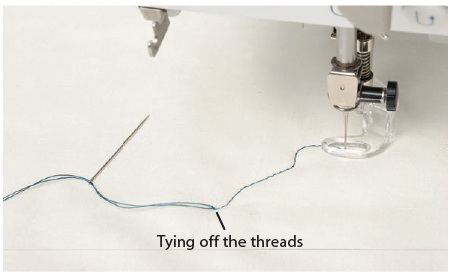
Slide that needle under the top layer of your quilt, starting at the hole where you began sewing, and proceed in the direction of your quilting.
Pull the needle out an inch or two away from where you began. Give the needle a little tug and the square knot will pop into the hole where you began sewing. Clip these threads close to the top of the quilt and the thread will disappear. When you run out of thread in your bobbin or spool, or stop quilting, use the same process. If you dont have long enough tails of thread, unsew back to a good junction (the base of a leaf, a seamline, and such), and then pull the bobbin thread to the top and continue from there.
Next pageFont size:
Interval:
Bookmark:
Similar books «The Quilting Manual: Techniques, Troubleshooting & More: Designs for Hand & Machine»
Look at similar books to The Quilting Manual: Techniques, Troubleshooting & More: Designs for Hand & Machine. We have selected literature similar in name and meaning in the hope of providing readers with more options to find new, interesting, not yet read works.
Discussion, reviews of the book The Quilting Manual: Techniques, Troubleshooting & More: Designs for Hand & Machine and just readers' own opinions. Leave your comments, write what you think about the work, its meaning or the main characters. Specify what exactly you liked and what you didn't like, and why you think so.

